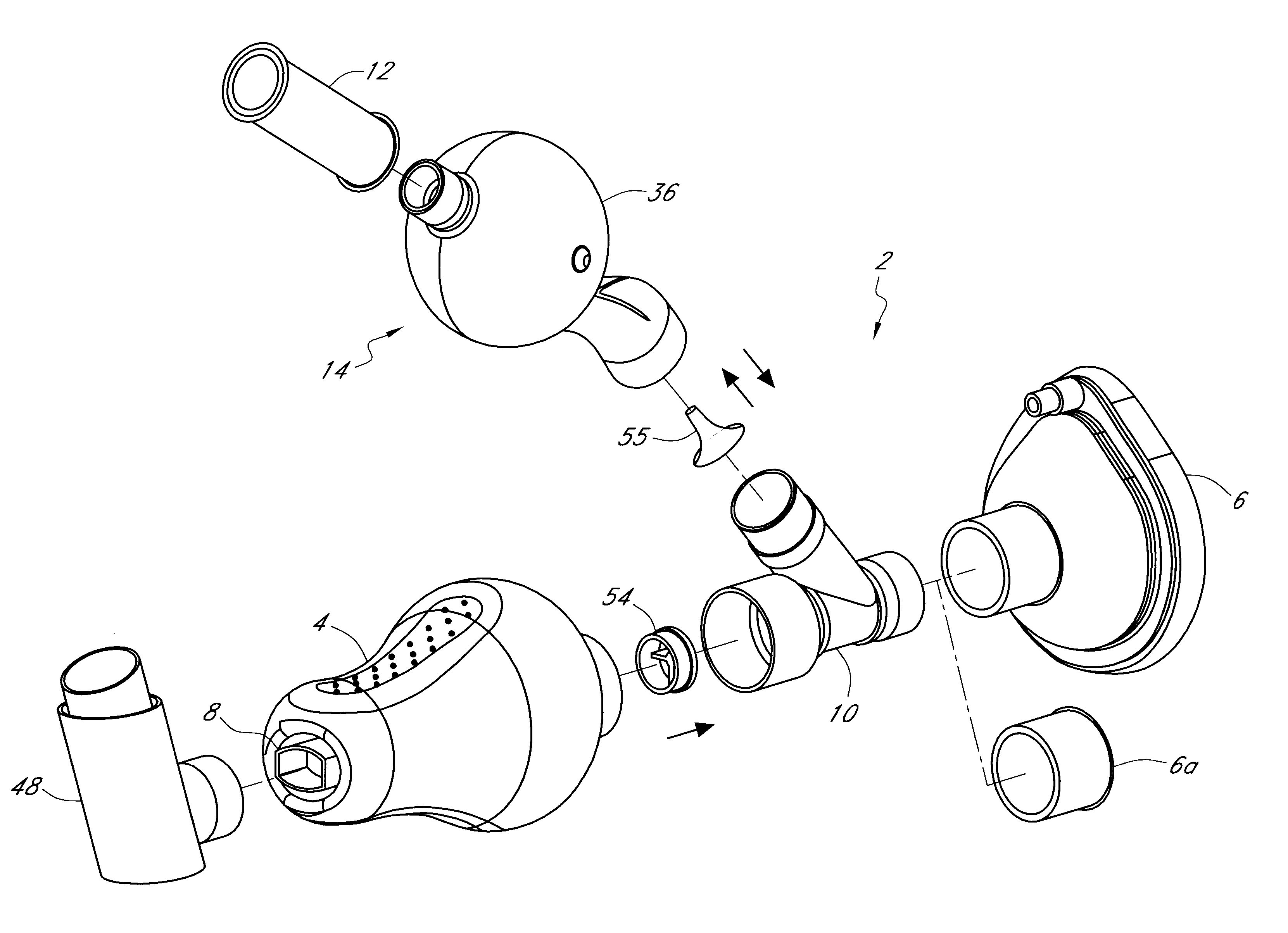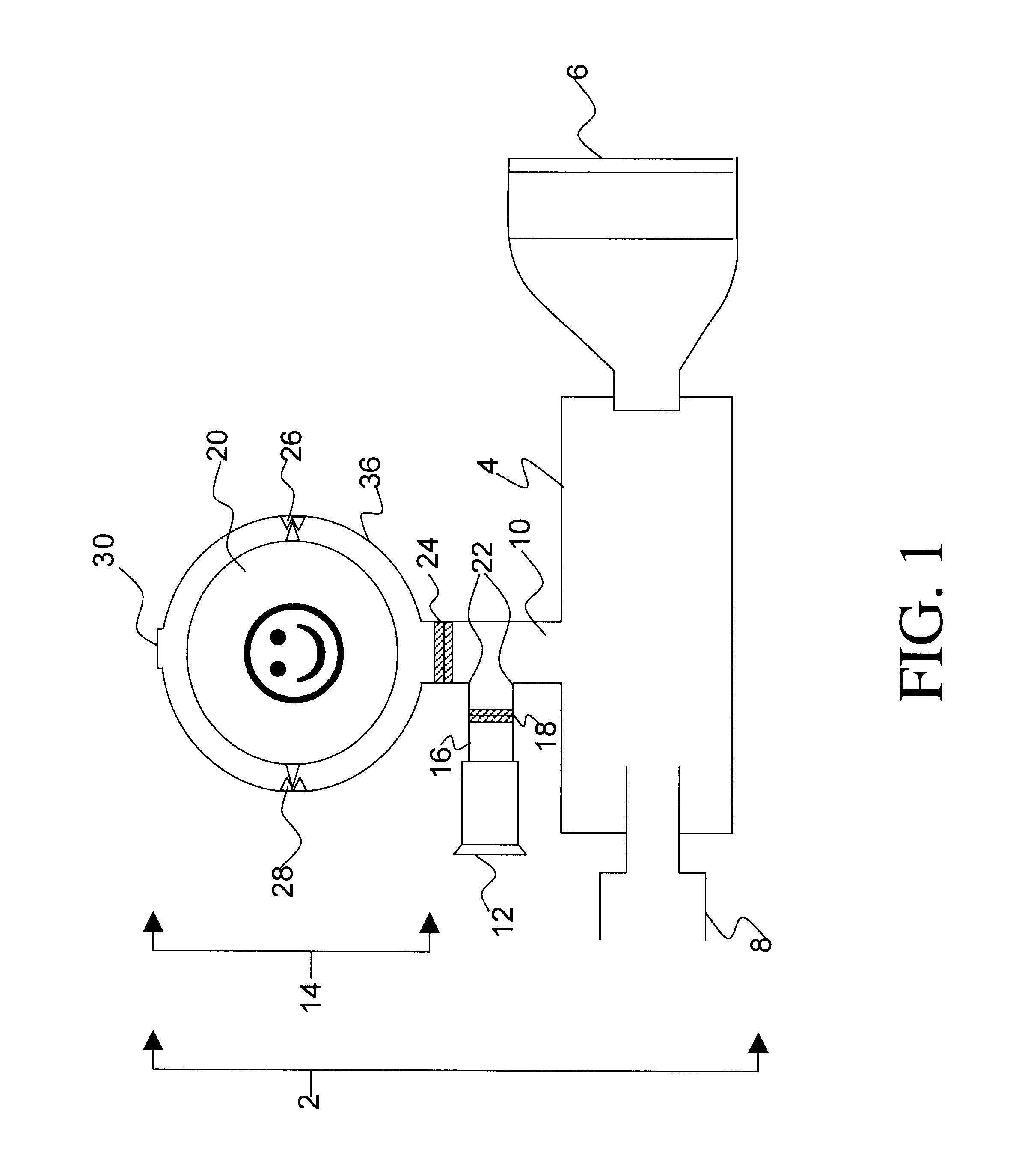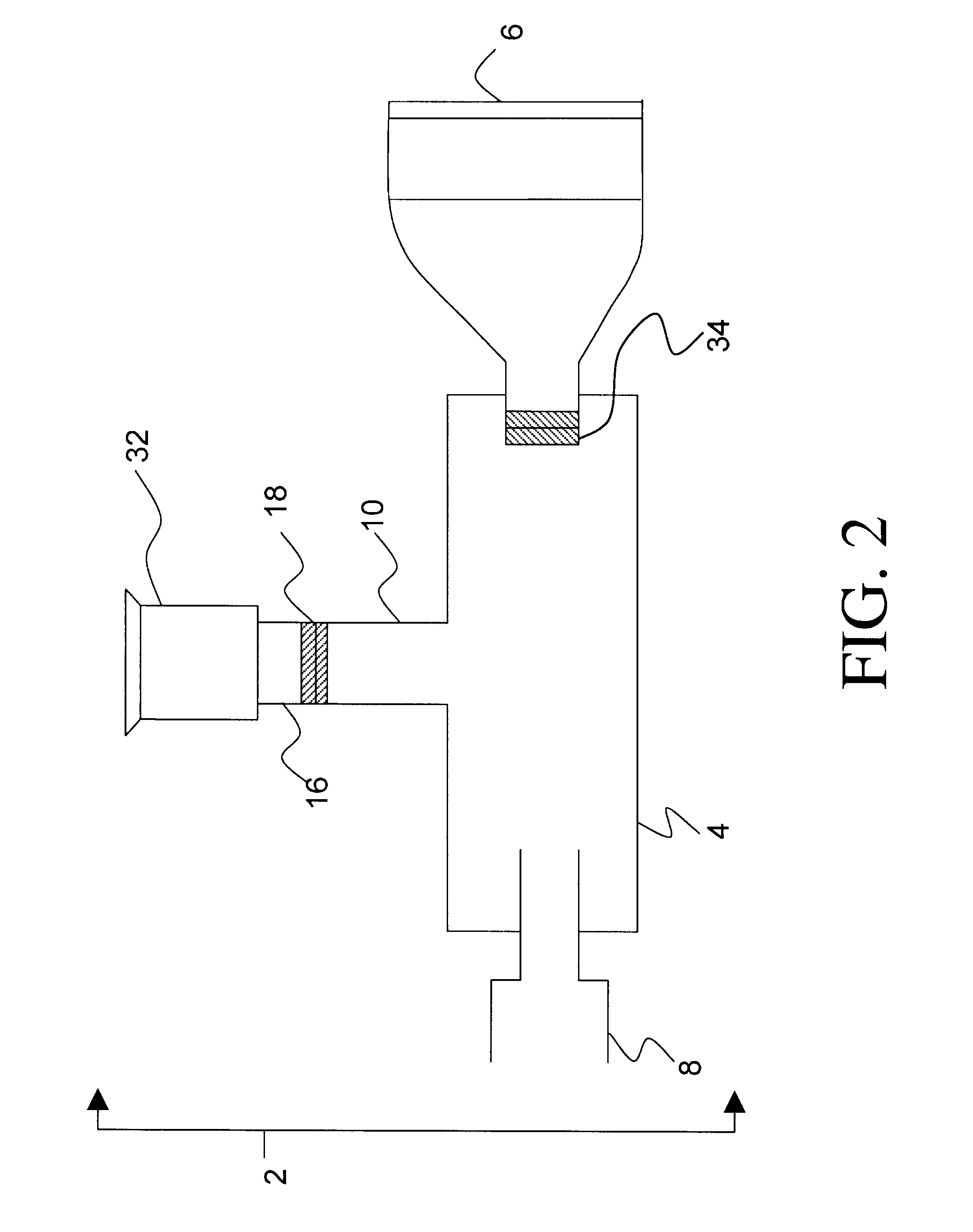Drug delivery device and methods therefor
a delivery device and drug technology, applied in the pharmaceutical industry, can solve the problems of difficult to achieve the effect of considerable training for many drugs delivered from standard inhalation devices are not delivered efficiently to infants and small children, and often suboptimal delivery of aerosols, powders or gases to infants and children
- Summary
- Abstract
- Description
- Claims
- Application Information
AI Technical Summary
Benefits of technology
Problems solved by technology
Method used
Image
Examples
example 2
An Incentive Inhaler Device Comprising an Inhalation-driven Incentive Toy Attached to the Connector or Spacer via a Conduit
second embodiment
FIG. 2 illustrates the invention comprising a incentive inhaler device (2) having a single inhalation-driven incentive toy unit (32) attached to the separator element (10) said separator element comprising an inhalation conduit (16) having a one-way valve (18) in sealing engagement therewith through which only inhaled air can pass.
In use, a metered dose of medicament is released into the connector (4) via a drug delivery device (not shown) that is releasably engaged in a sealing manner to the drug delivery device receiving means (8). The mask (6) is brought into contact with a patient's face and then the patient inhales. Alternatively, the patient may inhale simultaneously with bringing the mask (6) to his / her face. The device shown in FIG. 2 functions essentially in the same way as the device set forth in FIG. 1, however in the instant embodiment there is no mechanism for exhalation into the connector (4). To prevent exhaled air / medicament mixture from entering the connector (4), t...
example 3
An Incentive Inhaler Device Comprising an Exhalation-driven Incentive Toy Attached to the Connector or Spacer via a Conduit
PUM
 Login to View More
Login to View More Abstract
Description
Claims
Application Information
 Login to View More
Login to View More - R&D
- Intellectual Property
- Life Sciences
- Materials
- Tech Scout
- Unparalleled Data Quality
- Higher Quality Content
- 60% Fewer Hallucinations
Browse by: Latest US Patents, China's latest patents, Technical Efficacy Thesaurus, Application Domain, Technology Topic, Popular Technical Reports.
© 2025 PatSnap. All rights reserved.Legal|Privacy policy|Modern Slavery Act Transparency Statement|Sitemap|About US| Contact US: help@patsnap.com



